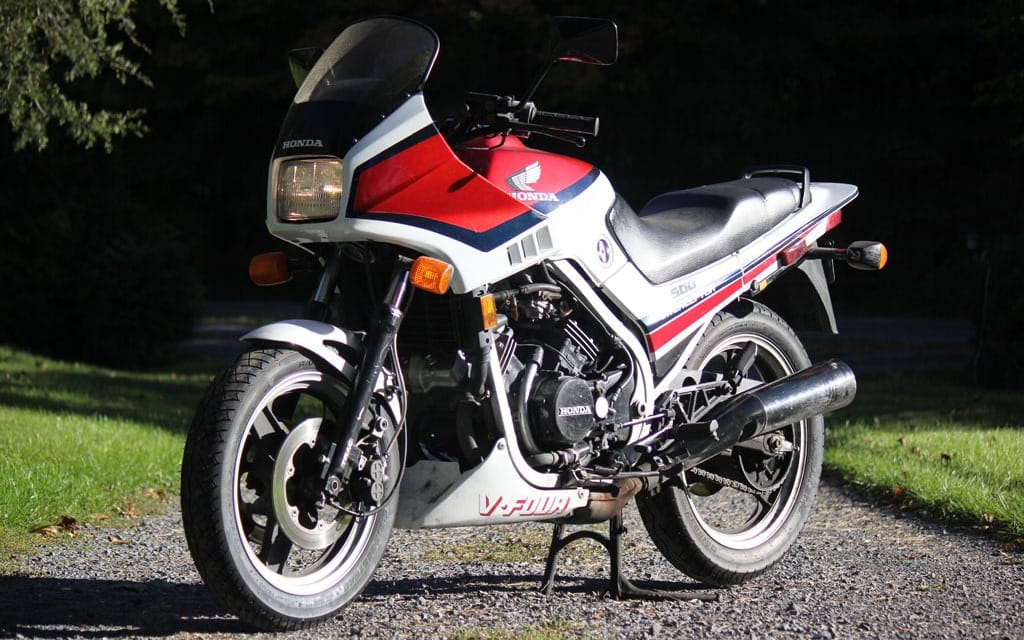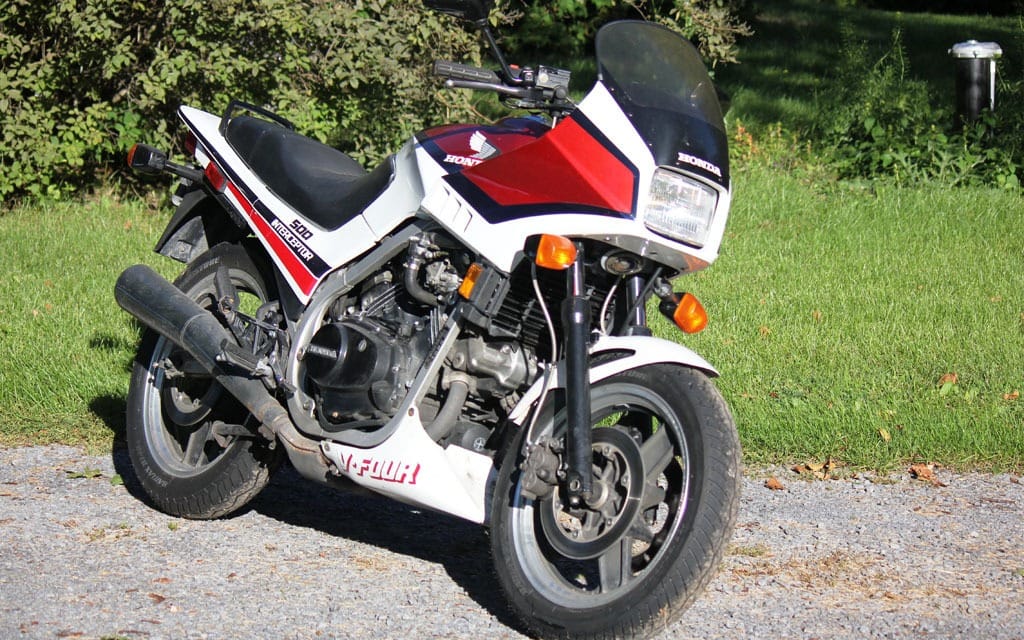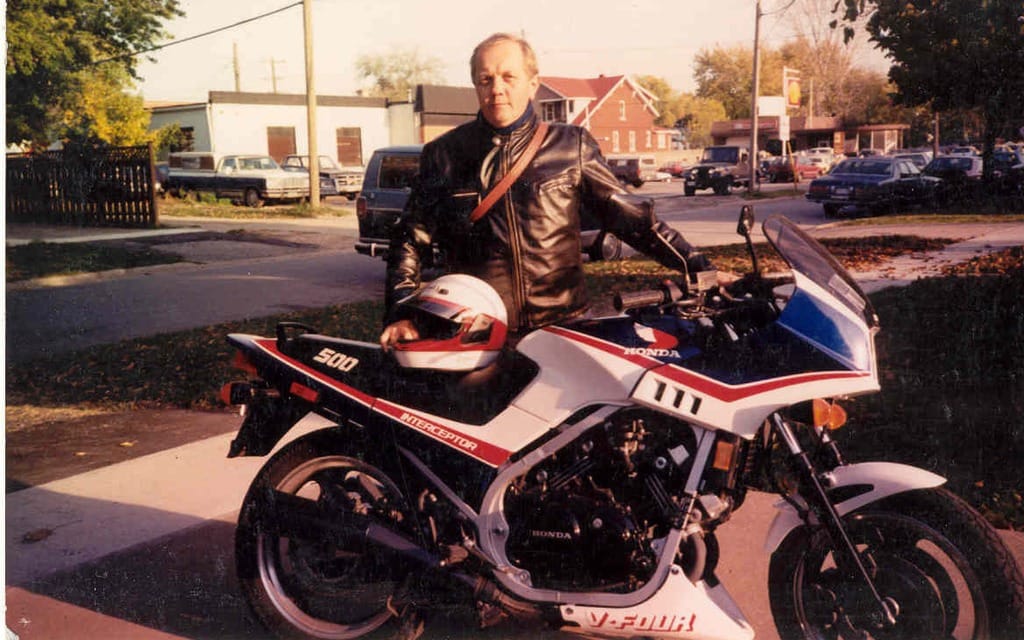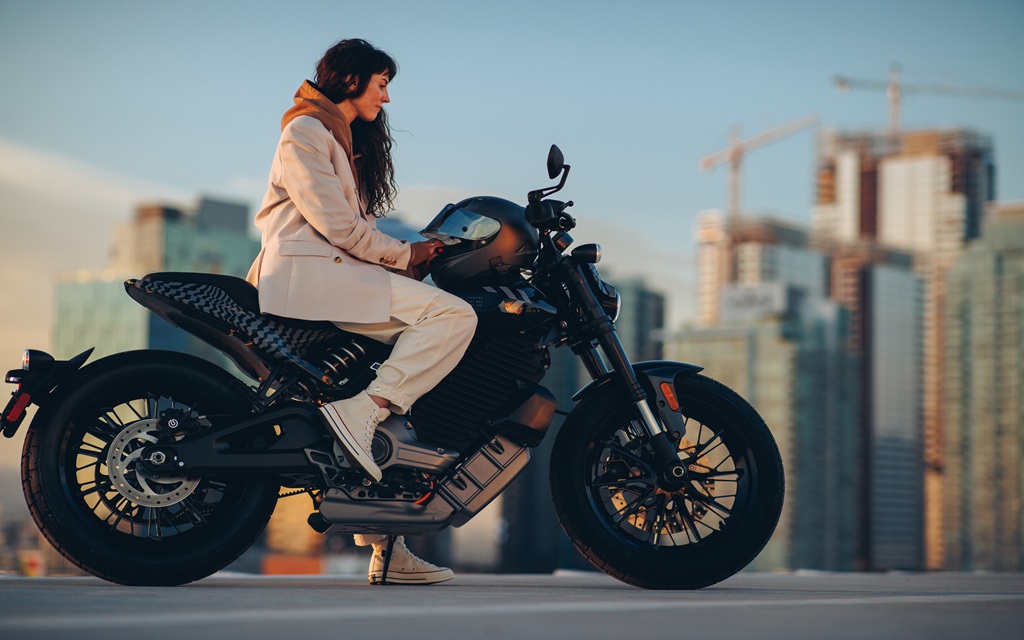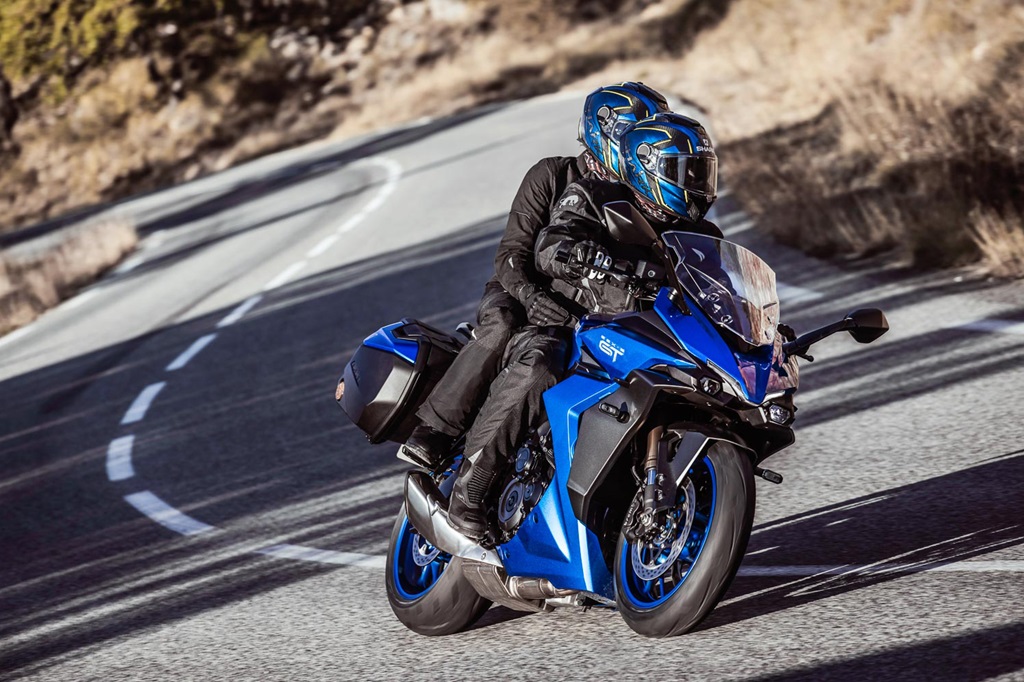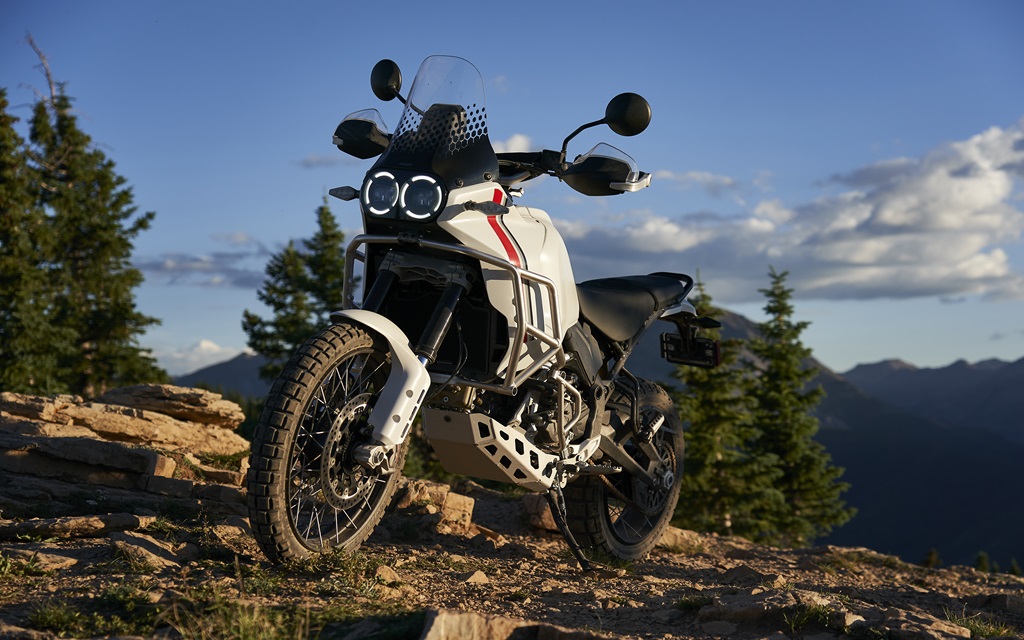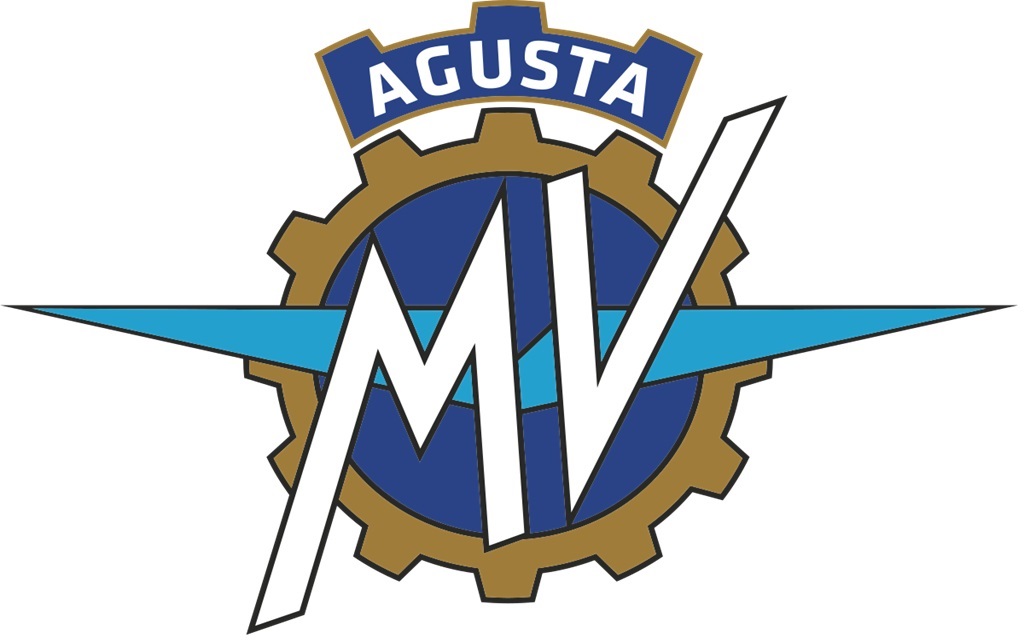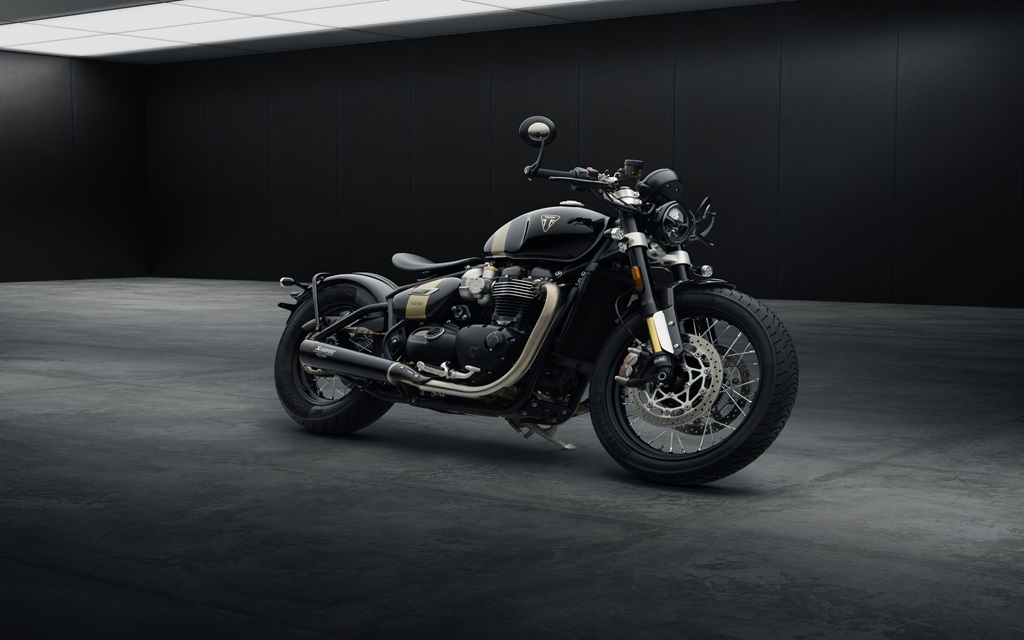Year:
1984
Paid:
$2,100
New sales price:
$3,799
Odometer at purchase:
40,000
Odometer now:
45,000
LCol Mark Popov is reluctant to rev his 1984 VF500F Interceptor to its redline, since the little Honda is nearly 30 years old, but he might want to rethink his caution given the comments in the September 1984 Cycle Canada. “The VF500 astonishes riders with the high revs it easily attains,” the editors wrote. “At the race track, the redline was frequently ignored to avoid upshifting, and occasional forays as high as 13,500 rpm were handled with no signs of distress.”
It wasn’t just the engine’s willingness to exceed its 12,000 rpm redline that endeared the bike to testers; with a claimed 68 hp, a broad torque curve, little vibration, precise steering, a comfortable seating position, and great brakes, the little Interceptor was a lot to love. It didn’t hurt that it offered “spell-binding performance,” too. Given the VF500s qualities, can it be a coincidence that the motto of the First Canadian Division, where Popov works, is “agile, versatile, ready”? We think not.
HOW DID YOU FIND THE VF500?
Kijiji. My father had a VF500 back in the ’80s. And when I was going to university on Vancouver Island my buddy had a VF500 and I managed to get my first speeding ticket with it. So I always had a soft spot for them and I had a VF800 that I absolutely loved. I was searching for things on the Internet and there was a VF500 for sale in Ottawa, not too far from where I was living, so I discussed it with my wife and she was not averse to the idea of another motorcycle.
HAVE YOU RIDDEN IT AT HIGH SPEED?
I’m leery of revving it out because it’s an older engine, but 120 on that thing feels a lot faster, and it’s good fun. When you’ve got it leaned over and you’ve got the throttle cranked on, you look down, you’re going 90 but it feels like you’re going twice that.
IS IT COMFORTABLE?
I’m about five-nine, so it’s reasonably comfortable for me. I think a taller guy would be a bit cramped on it. The seat is more comfortable than some — I had a ZX7 that I’d swear the seat was made of plywood — not as comfortable as others, but for a sportbike stance motorcycle, it’s fairly comfortable. I haven’t had much fatigue, much windblast, many problems riding it for two or three hours at speed.
WHAT’S IT LIKE TO WORK ON?
The first thing I did was put steel brake lines on. The brakes lines there were probably the original ones; they were very spongy. I had steel brake lines on my VFR800 and I would consider it to be the first mod you should do. It wasn’t too difficult.
It was leaking oil from the oil pan seal, and to get the oil pan off for that, you had to take pretty much everything else apart. I thought it would probably need a valve adjustment, and a friend of mine in Petawawa who owned a Magna 1100 had made up some wrenches bent the right way to get at the valve adjusters. I studied the shop manual and talked to a few folks, and then I dug into it. When I finally got the tank off and the coils off and everything and the valve covers off, I was a bit overwhelmed. There’s a lot of little bits in there, springs and little arms and cams. But I just dug into it.
That first time finding top dead centre, you find top dead centre and you think, well, do it again, so I probably turned that engine over 850 times with the ratchet.
That feeling of accomplishment when I got everything put together and I compression-tested the four cylinders and found them all within spec, all within 10 percent of each other, it was like, wow, I had actually done something.
CAN YOU COMPARE IT TO YOUR VFR800?
You can sense the evolution. The things that perhaps needed improvement on the smaller, older VFs were made better with the VFR750 and then VFR800. I think the VFR800, the ’98 to ’01 generation, without the VTEC engine, were my favourite. I would consider buying another. The feeling, and the sound of the cams and that hit of power at 5,000 rpm. The way the power comes on, the 500 is smooth, but the 800 is much smoother and a much more precise engine. You definitely feel the family resemblance though. It feels like a rougher tougher little brother, and the 800 is a bit more cultured, I guess.
DO YOU LIKE THE WAY IT LOOKS?
I like it. The half fairing is good because it lets you see that engine, and the way they’ve got the plumbing around the engine you can actually see those cylinders, see that bank of carbs tucked in between the two banks of cylinders. They paid some attention to detail with the cosmetics of the engine. I’m a bigger fan of dual headlights than that early ’80s square headlight, and I think an old FZ 600 fairing crafted on with the dual headlight set up would look pretty sharp, but it’s a nice looking little motorcycle.
YOU’VE BEEN IN THE CANADIAN FORCES FOR 23 YEARS.
Yes. I was trained as an armour officer, so I’ve learned how to command main battle tanks and armoured reconnaissance vehicles, and now I’m what we call the J7 or the training officer for the First Canadian Division headquarters in Kingston. One of our mandates is we synchronize and coordinate the disaster assistance response team, which we just sent to the Philippines, so I’ve been kind of busy lately. Half my team is out the door right now with the DARTS, on their way to Manila as we speak.
IT MUST BE EXCITING.
There are definitely periods of excitement. The challenge is it often gets in the way of the riding. Two tours in Afghanistan, a tour in Yugoslavia, Golan Heights, South Lebanon, and every time I go — when I bought my VFR800, the week that I bought it, they said by the way, you’re going to Bosnia this summer, so I didn’t get much riding in. That being said, the forces have been very good to me.
BACK PAGES
Despite its displacement handicap, the VF500 more than holds its own and is stronger than all its four-stroke competitors save the Yamaha FJ600. The Yamaha is still the powerhouse of the class … but they are close at the top end. The VF500’s broad powerband makes it deceptively quick. Initially the engine feels underpowered, but much of this sensation derives from the almost flat torque curve, a characteristic shared by all the Interceptors. However, the engine pulls best in the top third of the powerband. Kept above 9,000 rpm the engine responds instantly with authoritative power. Certainly, a 12.38-second quarter mile time must be considered remarkably quick for a 500 cc motorcycle.
Perhaps the engine’s only failing is one that it shares with other Honda V4s, namely the difficulty of performing routine maintenance. Access to spark plugs and the screw-type valve clearance adjusters is limited and adds significantly to the time required to perform basic tasks.
Engine performance is not the 500 Interceptor’s only strong point. The rectangular-section frame closely resembles that of the VF750 and not surprisingly the VF500 handles very well.
—Cycle Canada, September 1984
